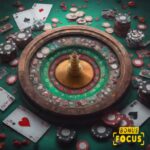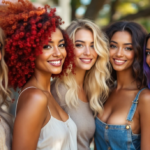Understanding Fine Hair: Characteristics and Challenges
Fine hair is often characterized by its thin and delicate strands, making it more prone to damage and lack of volume. Many people with fine hair often face the challenge of achieving the appearance of thickness and fullness, which can lead to frustration when styling.
One of the primary characteristics of fine hair is its light texture. Unlike coarse or thick hair, fine hair tends to lay flat against the scalp. This characteristic can make it difficult to hold styles, particularly those requiring volume or bounce. Furthermore, fine hair can be susceptible to oiliness, requiring more frequent washing.
Another challenge faced by individuals with fine hair is the tendency for it to become easily tangled and knotted. The delicate nature of fine strands means that they can snag on each other or on clothing, leading to breakage if not handled with care. To combat this, using a wide-tooth comb or a detangling brush can be beneficial, as these tools help to minimize stress on the hair while removing tangles. Additionally, incorporating a leave-in conditioner can provide much-needed moisture and slip, making it easier to manage fine hair without causing damage.
Moreover, the styling products used can significantly impact the health and appearance of fine hair. Heavy products can weigh down fine strands, leading to a flat look, while lightweight mousses and volumizing sprays can help create the illusion of fullness without compromising the hair’s natural movement. It’s essential for those with fine hair to experiment with different products to find the right balance that enhances their hair’s natural beauty while addressing its unique challenges. Regular trims can also help to remove split ends and keep the hair looking fresh and healthy, making styling easier and more effective.
Choosing the Right Length for Your Long Bob
The long bob, or “lob,” is a versatile hairstyle that can be tailored to suit various hair types, including fine hair. Choosing the right length is crucial for making fine hair look fuller. A lob that falls between the shoulders and collarbone is generally flattering and can create the illusion of volume.
For a style that adds dimension, consider choosing a length that frames your face and complements your neck. If you prefer a more voluminous look, opt for a lob that is slightly shorter in the back and gradually angling longer towards the front. This cut can elevate fine hair, making it appear thicker.
When considering the right length for your lob, it’s also essential to think about your lifestyle and how much time you want to spend on styling. A longer lob may require more maintenance and styling products to keep it looking fresh, while a shorter version can be effortlessly chic and low-maintenance. Additionally, incorporating layers can enhance the texture and movement of your hair, allowing for a playful, tousled look that works well with both straight and wavy styles.
Another factor to consider is your hair’s natural texture. If you have wavy or curly hair, a longer lob can help to weigh down the curls, providing a more controlled and polished appearance. On the other hand, if your hair is straight, you might want to experiment with a blunt cut to maximize the sleekness and shine. Don’t forget to accessorize your lob with the right styling products, such as volumizing mousse or texturizing spray, to achieve that perfect, effortless finish that showcases your unique style.
The Best Bangs Styles for Fine Hair
Bangs can be a game-changer for fine hair, offering a way to enhance volume and create a more dynamic look. When selecting bangs, it’s essential to consider styles that work best with your hair’s natural texture.
Some great options for fine hair include blunt bangs, side-swept bangs, and curtain bangs. Blunt bangs can create a striking frame for the face and can be cut to various lengths to suit your preference. On the other hand, side-swept bangs add softness and help create the illusion of fullness.
Curtain bangs are particularly trendy and can add a whimsical touch while providing volume at the roots. This style allows for easy styling and keeps the look light and airy, making it ideal for fine hair.
In addition to these styles, textured bangs are another fantastic choice for those with fine hair. By incorporating layers and soft, feathery edges, textured bangs can add depth and movement, making the hair appear thicker. This style works beautifully with wavy or straight hair and can be tailored to suit different face shapes, ensuring a flattering look for everyone.
Moreover, it’s worth considering the maintenance and styling techniques that come with each bang style. For example, blunt bangs may require regular trims to maintain their shape, while curtain bangs can grow out more gracefully, offering versatility in styling. Using volumizing products and a light mousse can also enhance the overall look, providing that extra lift and bounce that fine hair often craves. Experimenting with different styling tools, like a round brush or a flat iron, can also yield exciting results, allowing you to switch up your look effortlessly.
Essential Hair Products for Volume and Texture
To achieve a voluminous long bob with bangs, utilizing the right hair products is essential. Start with a volumizing shampoo and conditioner to create a good base. Products formulated specifically for fine hair can help add lift without weighing it down.
To enhance texture, consider using a lightweight mousse or volumizing spray before blow-drying. These products help create a fuller appearance by giving hair more body and movement. A texture spray can also be beneficial for adding grit and persistence to the style.
Lastly, a dry shampoo is crucial for maintaining volume between washes. It not only absorbs excess oil but also adds a bit of texture, making your fine hair appear fuller.
Step-by-Step Guide to Cutting a Long Bob
Cutting a long bob requires precision and technique. If you decide to visit a salon, ensure you communicate clearly with your stylist about your desired length and shape. If you’re attempting this at home, follow these steps for the best results:
- Start with clean, dry hair. It’s easier to cut when the hair isn’t wet.
- Using sharp hair cutting scissors, section the hair into manageable parts. Clip the top sections out of the way.
- Begin cutting the back section first, cutting straight across to your desired length.
- Work your way to the front, ensuring to blend the lengths for a seamless transition.
- Finally, check for evenness and make any necessary adjustments.
Styling Techniques to Enhance Fullness
Once you’ve achieved your lob with bangs, the next step involves styling techniques that promote volume. One effective method is to blow-dry your hair upside down. This technique allows hair to lift away from the scalp, instantly creating fullness.
Using a round brush while blow-drying can further enhance volume. Focus on lifting the roots as you dry, directing the airflow from roots to ends. After drying, consider using a curling wand to add loose waves. This technique can create texture and movement, contributing to a fuller appearance.
For extra hold, finish with a lightweight hairspray to maintain your style throughout the day while keeping it touchable and natural.
Tips for Maintaining Healthy Fine Hair
Maintaining the health of fine hair is crucial for achieving a full, lush look. Regular trims are essential to prevent split ends, which can make hair appear thinner. Aim to visit your stylist every six to eight weeks.
Be mindful of your hair care routine. Choosing sulfate-free products can help prevent unnecessary drying and damage. Additionally, limiting heat exposure is important. When using styling tools, ensure you’re applying a heat protectant to prevent further damage to your delicate strands.
Hair Color Ideas to Add Dimension
Adding color to your fine hair can create the illusion of depth and volume. Consider highlights or lowlights to add dimension. Subtle balayage can create natural-looking transitions and movement, making your hair appear thicker.
Another effective choice is to opt for a darker root with lighter ends. This gradient effect can also enhance the perception of fullness while adding a modern edge to your style.
Common Mistakes to Avoid with Fine Hair
When styling fine hair, several common mistakes can hinder your quest for fullness. Avoid using heavy products that can weigh down your strands, as they can negate any volume you’ve worked hard to achieve.
Another mistake is skipping regular trims. Unkempt ends can make your hair look thinner and less healthy. Lastly, over-washing fine hair can strip it of natural oils, leading to a limp appearance. Aim to wash 2-3 times a week, utilizing dry shampoo in between washes.
Inspiring Celebrity Looks for Fine Hair Long Bobs
Celebrities often serve as a great source of inspiration for hairstyles, particularly when it comes to fine hair long bobs with bangs. For instance, Lucy Hale often rocks a chic long bob that enhances her fine hair with added texture.
Another notable style is that of Taylor Swift, who frequently showcases curtain bangs with her lob, bringing a youthful and vibrant look. Such celebrity styles can provide great ideas for how to style and wear your fine hair with confidence.
In conclusion, fine hair does not have to limit your styling options. By understanding your hair’s unique characteristics and implementing the right techniques, you can achieve a full, lush look with a long bob and bangs that highlights your natural beauty.






